- Home
- Roxane Gay
Bad Feminist: Essays Page 12
Bad Feminist: Essays Read online
Page 12
It’s not that I expected these letters, or even this novel, to address the full spectrum of the fat experience. Is that even a thing? It’s more that the letters speak to the lowest common denominator, nothing more. It’s disappointing that Gray cannot possibly imagine that perhaps some fat people have amazing, athletic sex, just like she does. Perhaps they aren’t sitting around miserably stuffing their faces next to someone who doesn’t love them. Earlier, I noted that there were two weaknesses in this book—the implausibility of all this drama over a mere thirty pounds of excess weight and, of course, these Dear Fat People letters. Really, though, these issues are symptoms of the same weakness. It’s as if the author’s understanding of fat people is such that the fattest she could imagine Gray as still desirable and interesting to Mikey, to Bennett, to the reader, is with only thirty pounds of excess weight. This book would have been stunningly improved if Gray were a hundred pounds overweight, maybe more, but I got the sense that the writer was afraid to go there. The Dear Fat People letters are purportedly from Gray, but as the book goes on, you get the impression they are actually from the author herself confessing her sins, reaching for catharsis from within her own personal prejudices about fat.
By the end of Skinny, everything has fallen apart. The camp is shut down. The campers return to their lives, skinnier, certainly, but only by happenstance. They haven’t confronted their issues or learned about healthy eating and healthy ways of dealing with difficult circumstances. They haven’t acquired the tools to prevent their bodies from further expanding. Bennett returns to his home, and Gray returns to New York, though not to her relationship with Mikey. She regains most of the weight she lost. The ending is a bit rushed, so it’s hard to know if Gray has learned much of anything. At the end, Gray is sitting in an empty room with Bennett. There is a new distance between them even though he does not know it yet. “And for just a second, I forgot where I was. I forgot the things I always wished to forget. And I felt a remarkable lightness.” We are led to believe something profound has happened in this moment, but the moment is not convincing.
In the last Dear Fat People letter, Gray writes, “You wonder why we hate you? You are the visible manifestation of the parts of ourselves we hide.” There is truth in that too. Fat people wear their shit on the outside, with sagging breasts and swollen ankles and heavy thighs. Unlike a heroin addict, who might be able to cover track marks with long sleeves, a fat person cannot hide the fact that something has gone awry. Fat people have secrets, and you may not know what those secrets are, but they can be plainly seen. By the end of Skinny, we know many of Gray’s secrets but we don’t seem to know or see the secrets that matter.
When I left fat camp, I had lost the weight I needed to lose, mostly because the food at camp was terrible and there was so much walking. Anyone can lose weight if her only culinary options are Jell-O and salad with light dressing and grilled chicken breasts and she’s never given a minute to sit and relax. In the first few weeks after fat camp, it was fun to feel like myself again, to feel light and somehow freed. When I returned to school, there were compliments and other expressions of appreciation for my much thinner body. That felt good too. But then I started eating again, worked even harder to make my body fill as much space as possible, tried to fill that ragged need inside of me. Very little had changed. I had not really found catharsis. Oh, how I hungered.
The Smooth Surfaces of Idyll
Happiness is not a popular subject in literary fiction. We struggle, as writers, to make happiness, contentment, and satisfaction interesting. Perfection often lacks texture. What do we say about that smooth surface of idyll? How do we find something for narrative to hold on to? Or, perhaps, we fail to see how happiness can have texture and complexity so we write about unhappiness. That at least seems easier for me. I am probably too comfortable going there, wallowing in darkness, suffering, unhappiness. Misery loves company. In fiction, we can be unhappy together.
I have been thinking about happy endings. I am always thinking about happy endings. I am always thinking about happiness.
During an interview, I was asked if I ever write happy stories or happy endings. I considered that question for days. I hear it a lot from people I’m close to as well. Almost every story I write is a happy story, a fairy tale of some kind. Yes, you’ll find death and loss and betrayal and darkness and violence in my stories, but there’s often also a happy ending. Sometimes, people are unable to recognize happiness because all they see is the darkness. I look at many of my stories and I see a woman who has found some kind of salvation after enduring seemingly unsalvageable circumstances, a hero who helps her to that place of peace, however incomplete that peace might be. The details change, but that underlying structure, that fairy tale, is often there. I’m as intrigued by happy endings as I am by the deeply flawed ways people treat one another, even if I don’t quite know what to do with that behavior.
Fairy tales have happy endings. There are often lessons to be learned, and sometimes those lessons are learned the hard way, but in the end, there is happiness, at least in the fairy tales I like best. My novel, An Untamed State, is in its own way about fairy tales. The story follows a woman who was living a fairy tale and then she is kidnapped and her fairy tale ends. Every story can usually be broken down to what it’s really about in one sentence. I thought it would be interesting to start with the happy ending and see how that might unravel. It didn’t just unravel. In the novel, Mireille Duval’s happy ending comes all the way apart and then I had to figure out how to put the pieces back together, how to get my characters back to something resembling happiness.
I really enjoyed writing An Untamed State. I learned so much about pushing myself to write the same project every day and how to tell a story in long form and how to really slow the story down and give it the room it needs. The first draft of An Untamed State did not have a happy ending, but I received feedback indicating a happy ending of some kind, however imperfect, was needed to make things seem less hopeless. I tried my best. As I started thinking about the next novel, one that’s about motherhood and surrogacy and a marriage of convenience and the incomplete choices we make when we’re too young to know we’re doing the wrong thing, I decided that no matter what, no matter how implausible it might seem, this book was going to have a very happy ending. I have no idea how I’m going to get there in a way that doesn’t defy credulity, but I am going to try. Maybe it won’t be completely realistic and maybe that’s okay. Realism is relative. My fantasy life often feels quite real.
Contemporary art often unites the real and the fantastic. Contemporary art inspires, often because it is so difficult to explain or contextualize. In 2011, I saw the brilliantly curated exhibit Hard Truths, at the Indianapolis Museum of Art, featuring the artwork of Thornton Dial. It’s hard to define Dial’s style: he works across many mediums—sculpture, drawings, assemblages, collage, much of it socially conscious, all of it gorgeous, passionate, visceral.
Born in 1928, Dial grew up in the rural South and endured a great deal of economic hardship. He began working full-time at the age of seven. He experienced a great deal of racism, the untenable burden of segregation. The indelible mark of racism can be seen throughout much of his work—torment, anger, sadness, pain are all palpable. Unhappiness as muse is not solely the purview of writers.
The scale of Dial’s art is often imposing. Most of his pieces are massive, taking up entire walls or floors, like he needs that much room to best express himself. My, and how he does. The scale of the art really reinforces the scale of the dark, emotional influence. That scale certainly made me feel grateful art exists as an outlet.
Trophies (Doll Factory) is one of the first pieces in the Hard Truths exhibit. Women raised Thornton Dial, and their feminine influence marks a great deal of his art. In Trophies, the dolls are garishly painted, half dressed, many of them painted gold like trophies. It’s an interesting commentary on modern womanhood, perhaps even more interesting given that the commentary co
mes from a man. There is so much to look at in Trophies, in all of Dial’s pieces. The level of detail is remarkable. I would have been content standing in only one of the many rooms of the exhibit because there was that much to see. The way the dolls are splayed across the canvas, how their breasts are bared, legs spread amid the chaos of the rest of the assemblage, really sets the tone for the exhibit. As I moved on, I thought, There won’t be any happy stories here.
Dial imbues his work with suffering. The companion volume to the Hard Truths exhibit, edited by Joanne Cubbs and Eugene W. Metcalf, details how Dial’s art functions as social commentary on race, class, gender, war, politics, all human concerns. In 1993, Dial was interviewed by Morley Safer for 60 Minutes. He thought the interview was going to be about his art, but instead, Safer took the opportunity to do an “exposé” on how southern black vernacular artists were being exploited by white art dealers. Dial was and felt ambushed and misled and misrepresented by Safer. He carried a lot of anger about the incident for years, anger you can see in Strange Fruit: Channel 42. Dial’s work really gave me the opportunity to think about art as a narrative. In Strange Fruit: Channel 42, you see Dial as the man hanging in effigy, self as strange fruit, and the TV antenna (channel 42 was the station that aired the Safer interview where Dial lived). There are smaller details you can’t see unless you are standing in front of the piece, but they all work in concert to tell the story of Dial’s anger and frustration. He was angry for many reasons, but mostly because he thought the 60 Minutes interview was going to be his big break, that finally his work was going to be recognized. There’s a bitter humor to the piece that holds the weight of the artist’s disappointment. Dial also created another piece in response to the interview; this one, Looking Good for the Price, is much darker and angrier: a slave auction scene with a macabre white auctioneer, everything abstract and quite tortured, the images spread across the canvas at awkward angles. Looking Good for the Price tells another story about the artist’s anger, his sense of humiliation, another story about unhappiness, one without a happy ending.
The exhibit, as a whole, was overwhelming. As I moved from room to room, I thought about how much pain Dial bleeds onto his canvas and how he works with that pain in culturally savvy and responsive ways. Given Dial’s life story, it’s understandable that his work is a reflection of the difficulties he has experienced. I could not imagine that a happy ending would be possible.
And yet.
Room after room after room of the exhibit was filled with these massive art pieces, sculptures, drawings, most of them created using found materials and lived experiences. The last room of the exhibit, though, was saturated in bright color. It was startling to enter the room and see . . . redemption, salvation, triumph, hope, happiness, a happy ending after a long, sorrowful journey. The pieces in the last room of the exhibit reflected Dial’s spirituality and how he overcame serious illness. Everything about the artwork was vibrant, almost ecstatic, in a much different way from the rest of the exhibit. Dial’s The Beginning of Life in the Yellow Jungle is an explosion of yellow, an artistic musing on life and how it evolves. The assemblage has fake plants, flowers made from plastic soda bottles, a doll serenely composed, and because of how these elements are held together, with Splash Zone epoxy, you get the sense that everything is connected, both literally and figuratively. It was inspiring and refreshing to see an artist willing to explore happiness as much as he was willing to explore pain, anger, darkness, unhappiness. Dial’s art argues that both light and dark can rise from an artist’s experiences.
I have been thinking about happy endings in life, in art, in literature.
Dawn Tripp’s Game of Secrets is, as you might imagine, a novel about secrets—secrets among the novel’s characters and secrets the author withholds from the reader. Most of the plot hinges on Tripp doling out pieces of these secrets a little at a time. The story begins with an affair and a decades-old murder—sex, betrayal, death—the stuff of many interesting stories.
There’s some mystery to Game of Secrets, but mostly, a man is dead and we know it, even if we don’t know how he came to such a pass. The dead man was a father and an estranged husband and a lover. Game of Secrets is about many things, but mostly it revolves around the aftermath of this man, Luce Weld’s, death and how, for decades, it affects many residents in a small New England town. We think we know who did it—Silas Varick, the husband of Ada Varick, with whom Luce Weld was having an affair—but we can’t be sure.
The story is told from multiple perspectives across several decades, but the two main characters are Marne Dyer and her mother, Jane Dyer, who is the daughter of Luce Weld. Throughout the novel, Marne is engaged in the fragile beginnings of a relationship with Ray Varick, Ada’s son, and Jane is playing a game of Scrabble with Ada. In small towns, you can’t really escape secrets or Scrabble, and what makes Game of Secrets so readable is that, as a reader, you start to see that everyone knows a little something. Tripp makes it easy to piece together what everyone knows in order to see the whole story. The premise makes a happy ending seem nearly impossible because there are so many secrets that have been held close for so long.
In such an atmosphere, there’s bound to be unhappiness, sorrow, darkness, but these emotions don’t overwhelm the story. Instead, the awkwardness of these secrets creates a mournful tone. As I neared the end, I wondered how the story could have a happy ending for anyone involved. Because I was invested, I wanted that happy ending for everyone. I wanted the people in this town to find their way out of the darkness, to reach a place of redemption, salvation, triumph, hope, happiness, a happy ending after a long, sorrowful journey, even if I couldn’t see how that could be possible.
And yet.
There are happy endings in Game of Secrets for almost everyone involved, even though those happy endings may not look the way we expect happy endings to look. Just before his death, a man recognizes his son. A daughter finally begins to understand the mother who has long confounded her, and that daughter is able to grow, able to show her mother kindness. A husband tells his daughter his wife was the only one, has always been the only one, without regret. A woman makes peace with moving back to her hometown and tries to allow herself to love. A man remains open to love even when he is pushed away. The happy endings in Game of Secrets are subtle and incomplete but they are there, and it works because happiness itself is often subtle and incomplete.
Sometimes, and especially as a writer, I feel like I have no idea what happiness is, what it looks like, what it feels like, how to show it on the page.
I have no problem with darkness, sorrow, pain, or unhappiness. I have no intention of straying from these themes in my writing. But. In considering the Dial exhibit and Game of Secrets, I wonder how we can complicate these themes that pervade fiction and art so we can also achieve a more complete, complex understanding of happiness. Happiness is not uninspiring if we don’t allow our imaginations to fail us. I want to believe there is substance to fairy tales. I want to believe there’s something to hold on to, even when dealing with the slick smoothness of idyll, of joy.
The Careless Language of Sexual Violence
There are crimes and then there are crimes and then there are atrocities. These are matters of scale. I was shaken by an article in the New York Times about an eleven-year-old girl who was gang-raped by eighteen men in Cleveland, Texas. The levels of horror to this story are many, from the victim’s age, to what is known about what happened to her, to the number of attackers, to the public response in that town, to how the story was reported. There is video of the attack too because this is the future. The unspeakable will be televised.
The article was entitled “Vicious Assault Shakes Texas Town,” as if the victim in question were the town itself. James McKinley Jr., the article’s author, focused on how the men’s lives would be changed forever, how the town was being ripped apart, how those poor boys might never be able to return to school. There was discussion of how the eleven-year-old girl
, the child, dressed like a twenty-year-old, implying that there is a realm of possibility where a woman can “ask for it” and that it’s somehow understandable that eighteen men would rape a child. There were even questions about the whereabouts of the girl’s mother, given, as we all know, that a mother must be with her child at all times or whatever ill befalls the child is clearly the mother’s fault. Strangely, there were no questions about the whereabouts of the father while this rape was taking place.
The overall tone of the article was what a shame it all was, how so many lives were affected by this one terrible event. Little word space was spent on the girl, the child. It was an eleven-year-old girl whose body was ripped apart, not a town. It was an eleven-year-old girl’s life that was ripped apart, not the lives of the men who raped her. It is difficult to make sense of how anyone could lose sight of that fact, and yet it isn’t.
We live in a culture that is overly permissive where rape is concerned. While there are certainly many people who understand rape and the damage of rape, we also live in a time that necessitates the phrase “rape culture.” This phrase denotes a culture where we are inundated, in different ways, by the idea that male aggression and violence toward women is acceptable and often inevitable. As Lynn Higgins and Brenda Silver ask in their book Rape and Representation, “How is it that in spite (or perhaps because) of their erasure, rape and sexual violence have been so ingrained and so rationalized through their representations as to appear ‘natural’ and inevitable, to women as to men?” This is an important question, trying to understand how we have come to this.
We have also, perhaps, become immune to the horror of rape because we see it so often and discuss it so often, many times without acknowledging or considering the gravity of rape and its effects. We jokingly say things like “I just took a rape shower” or “My boss totally just raped me over my request for a raise.” We have appropriated the language of rape for all manner of violations, great and small. It is not a stretch to imagine why James McKinley Jr., in his reportage, was more concerned about eighteen men than one girl.

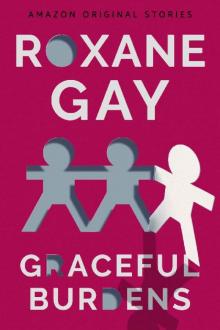 Graceful Burdens (Out of Line collection)
Graceful Burdens (Out of Line collection)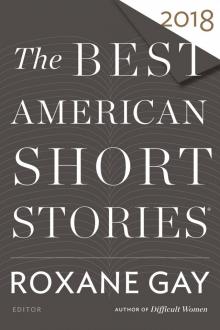 The Best American Short Stories 2018
The Best American Short Stories 2018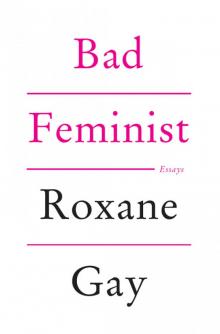 Bad Feminist
Bad Feminist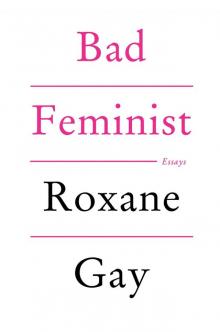 Bad Feminist: Essays
Bad Feminist: Essays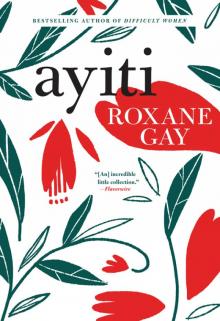 Ayiti
Ayiti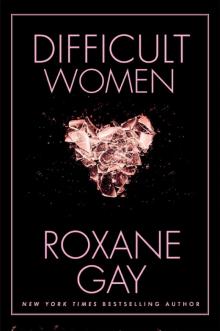 Difficult Women
Difficult Women An Untamed State
An Untamed State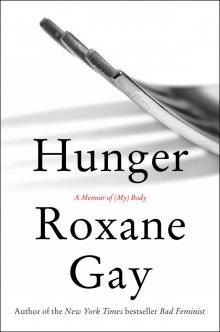 Hunger
Hunger